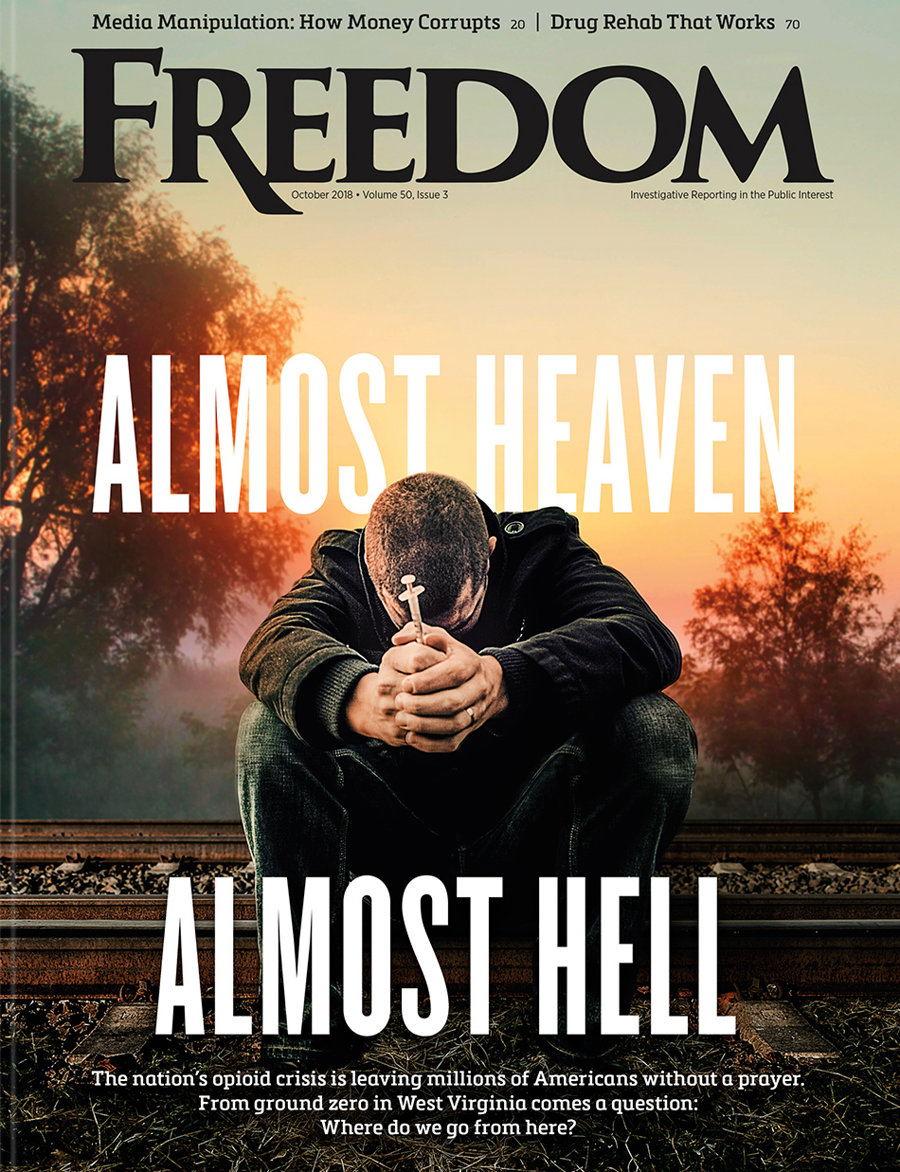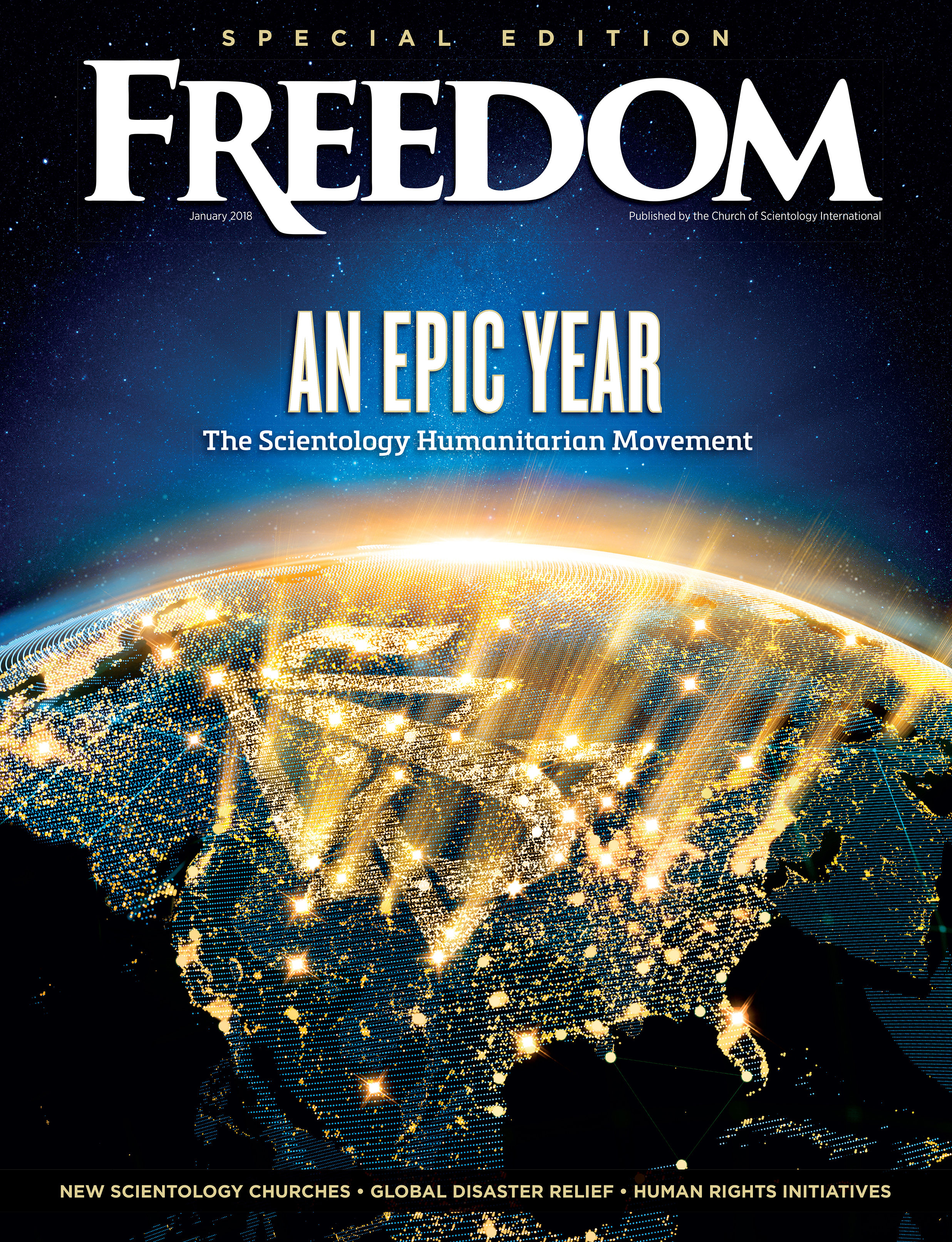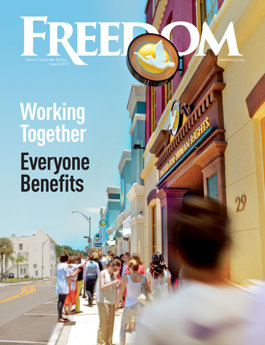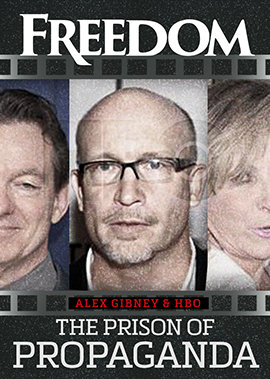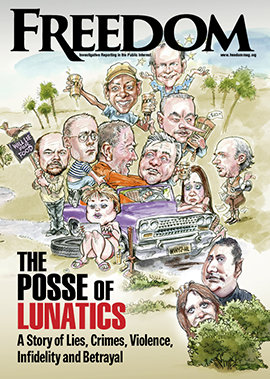Titled “Audit of Antisemitic Incidents 2024,” the report, published on April 22 by the noted Jewish civil rights organization, documented 9,354 cases of harassment, vandalism and assault across all 50 states and Washington, DC—a 5 percent increase over 2023 and a nearly 900 percent jump compared to a decade ago.
Offering a troubling gauge of religious intolerance nationwide, the findings span attacks in public spaces, campuses, businesses and religious institutions. The data underscores what the ADL calls a “persistent reality” for American Jewish communities—no longer a temporary spike, but a sustained and deepening crisis.
“No one should have to fear for their safety while practicing their faith.”
“Antisemitism is not confined to a particular region,” the ADL stated in the report’s summary, “but represents a national challenge.”
For the first time in the audit’s 46-year history, a majority (58 percent) of all antisemitic incidents in the US were tied to what the report described as “anti-Israel” sentiment.
While the ADL emphasized that criticism of Israeli government policies is not inherently antisemitic, the report found that thousands of incidents crossed the line into hatred of Jewish people.
At more than 5,000 anti-Israel rallies tracked in 2024, as many as 2,596 included overt antisemitic slogans, chants or imagery.
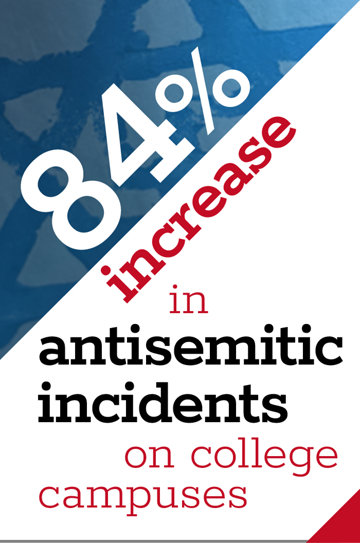
College campuses witnessed the sharpest surge, turning into what the report refers to as “epicenters of antisemitic activity.”
The ADL recorded a staggering 84 percent increase in antisemitic incidents on campuses compared to 2023, with a total of 1,694 cases documented—nearly one in every five incidents nationwide.
Some of the most troubling episodes unfolded at universities known for vibrant Jewish student life. At UCLA, encampments included chalk drawings inviting passersby to “step here” on Stars of David. At Yale, a Jewish student was reportedly jabbed in the eye with a Palestinian flag during a protest.
Meanwhile, Hillel chapters and Chabad centers—cornerstones of Jewish campus life—reported a marked rise in harassment and vandalism.
“This pervasive antisemitism has transformed American higher education from a space of learning and growth into one where many Jewish students face hostility, exclusion and sometimes physical danger because of their identity or their beliefs,” the report warned, referring to the hatred, marginalization and even physical danger many Jewish students now face.
While incidents at Jewish institutions fell slightly from the unprecedented surge in 2023, they remain alarmingly high by historical standards—twice the annual average recorded in the five years before October 7, 2023.
Synagogues, Jewish schools and community centers weathered hundreds of bomb threats in 2024, often coordinated in mass campaigns. Some threats carried chilling messages: “You Jews will pay for your crimes. We will end your lives.”
Vandalism and assaults near Jewish institutions also rose. In one case, a Jewish man was stabbed outside the headquarters of Chabad in Brooklyn, New York, by an attacker shouting anti-Israel sentiment and threatening his life.
The ADL emphasized that, although security has improved at many Jewish sites, American Jews are increasingly encountering harassment in daily life—at businesses, on sidewalks and in public spaces far beyond the walls of synagogues.
White supremacist groups continued to play a role, even as activity among some declined. Patriot Front, a Texas-based white supremacist group, remained the top distributor of antisemitic propaganda, while other groups such as the “virulently antisemitic” National Justice Party dissolved. The Goyim Defense League, which the ADL describes as “a small network of virulently antisemitic provocateurs,” persisted in spreading conspiracy theories and antisemitic myths.
At the same time, the report pointed out that antisemitic harassment online, while harder to quantify, remains a growing threat, compounding the dangers faced in the physical world.
Beyond physical attacks, the ADL noted the economic and psychological toll antisemitism imposes on Jewish Americans.
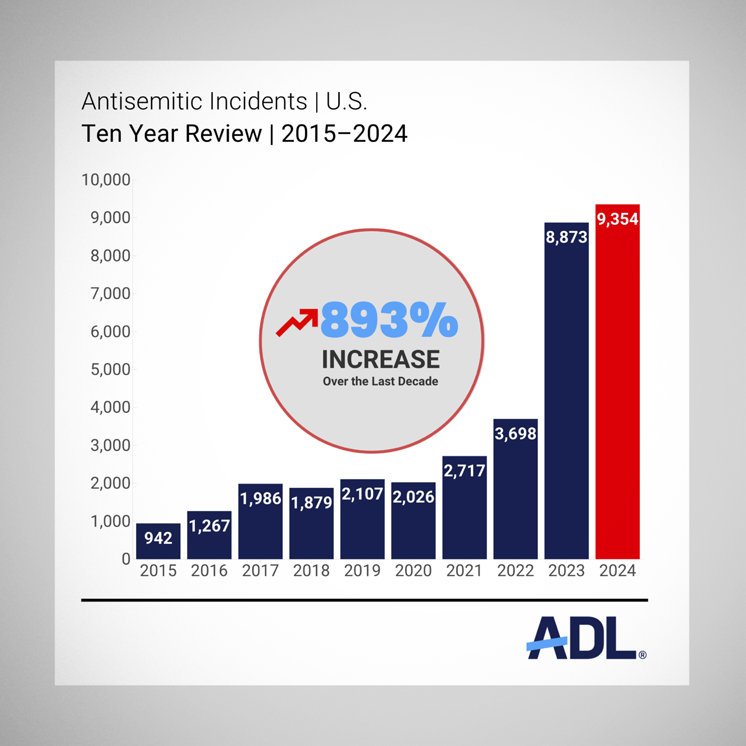
Jewish-owned businesses, kosher restaurants and visibly Jewish employees faced harassment and vandalism—forcing many to reconsider public expressions of identity, security investments and even business models.
This “hidden cost of antisemitism … extends well beyond the documented incidents themselves,” according to the report. The forced self-censorship, financial loss and emotional strain are profound and enduring.
The states with the highest number of antisemitic incidents largely mirror the map of America’s largest Jewish communities. New York, which recorded 1,437 incidents, topped the list, along with California (1,344). The bicoastal states were followed by New Jersey (719), Pennsylvania (465) and Massachusetts (438).
The spread was, however, nationwide. States with smaller Jewish populations, including Colorado (279 incidents) and Virginia (266), also recorded alarming totals.
In response to its findings, the ADL renewed its call for sweeping federal and state action, including:
- Passage of the Antisemitism Awareness Act, a bipartisan bill aimed at bolstering protections for Jewish students under civil rights law, which Congress approved on May 1, 2024 and is awaiting a vote in the Senate. The measure requires the US Department of Education to adopt the broad definition of antisemitism established by the International Holocaust Remembrance Alliance, an intergovernmental organization, for enforcing anti-discrimination laws.
- Expansion of the Nonprofit Security Grant Program—a federal initiative that offers funding to nonprofit organizations at high risk of terrorist attacks for target hardening and other physical security improvements—to help synagogues and Jewish institutions enhance their security.
- Development of state-level strategies to combat antisemitism across education, law enforcement and community engagement.
“No one should have to fear for their safety while practicing their faith,” the ADL stated in its report, clearly suggesting that the time to act against rising hate crimes is now. After all, as the organization’s regional director for New York/New Jersey, Scott Richman, put it to a local news outlet: “This year is the highest on record that we’ve ever encountered and it’s the highest by a lot.”






